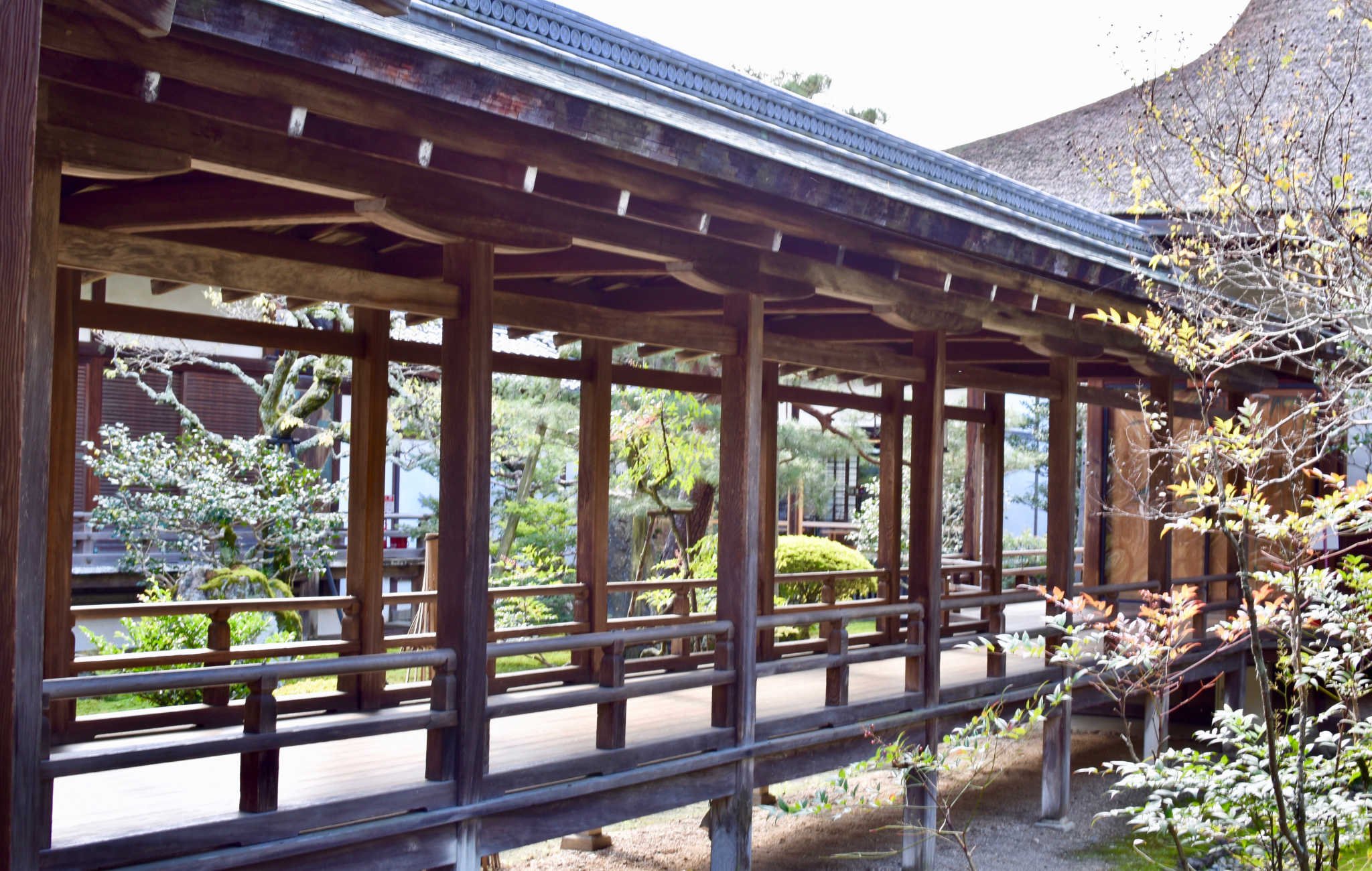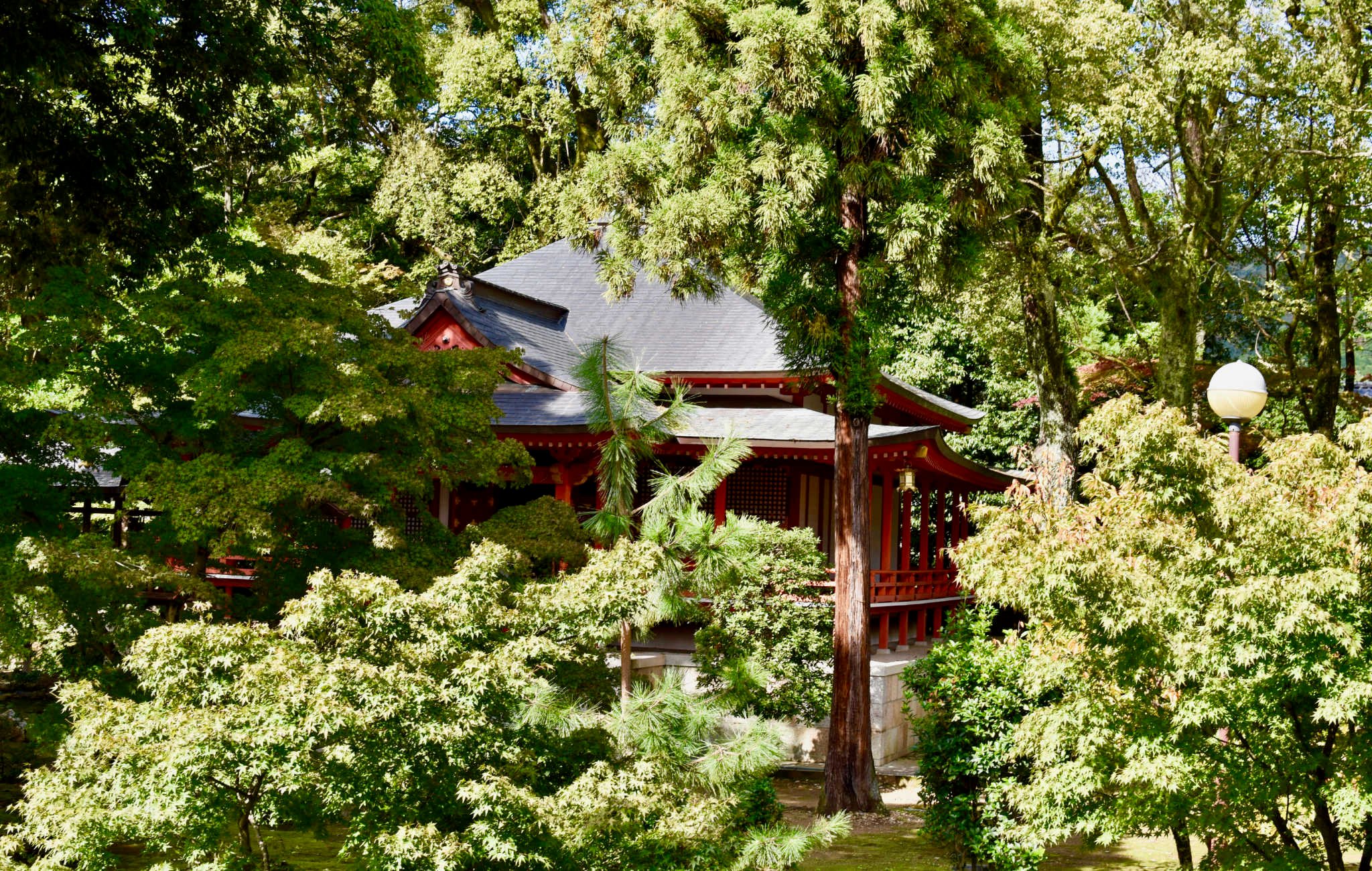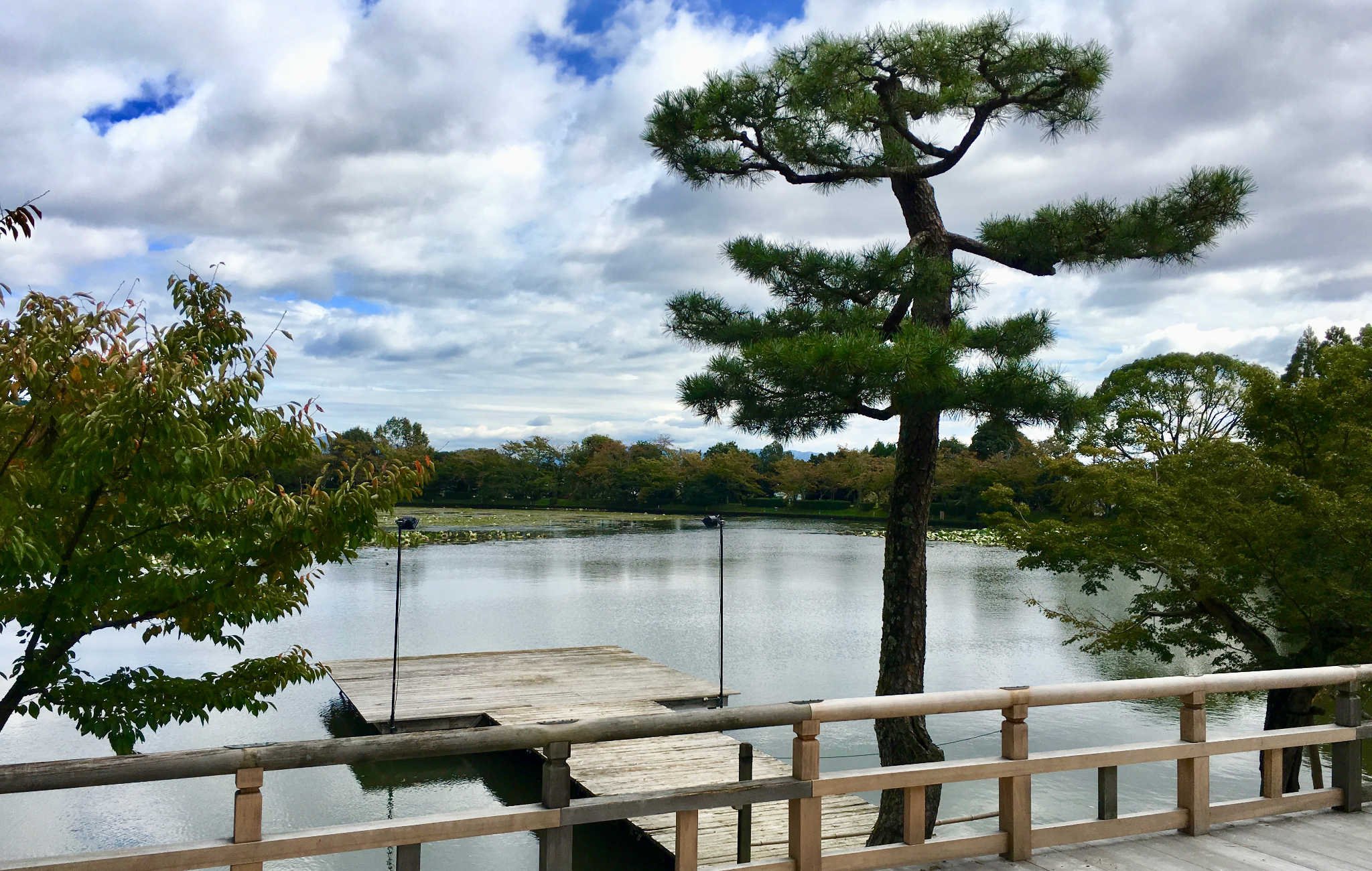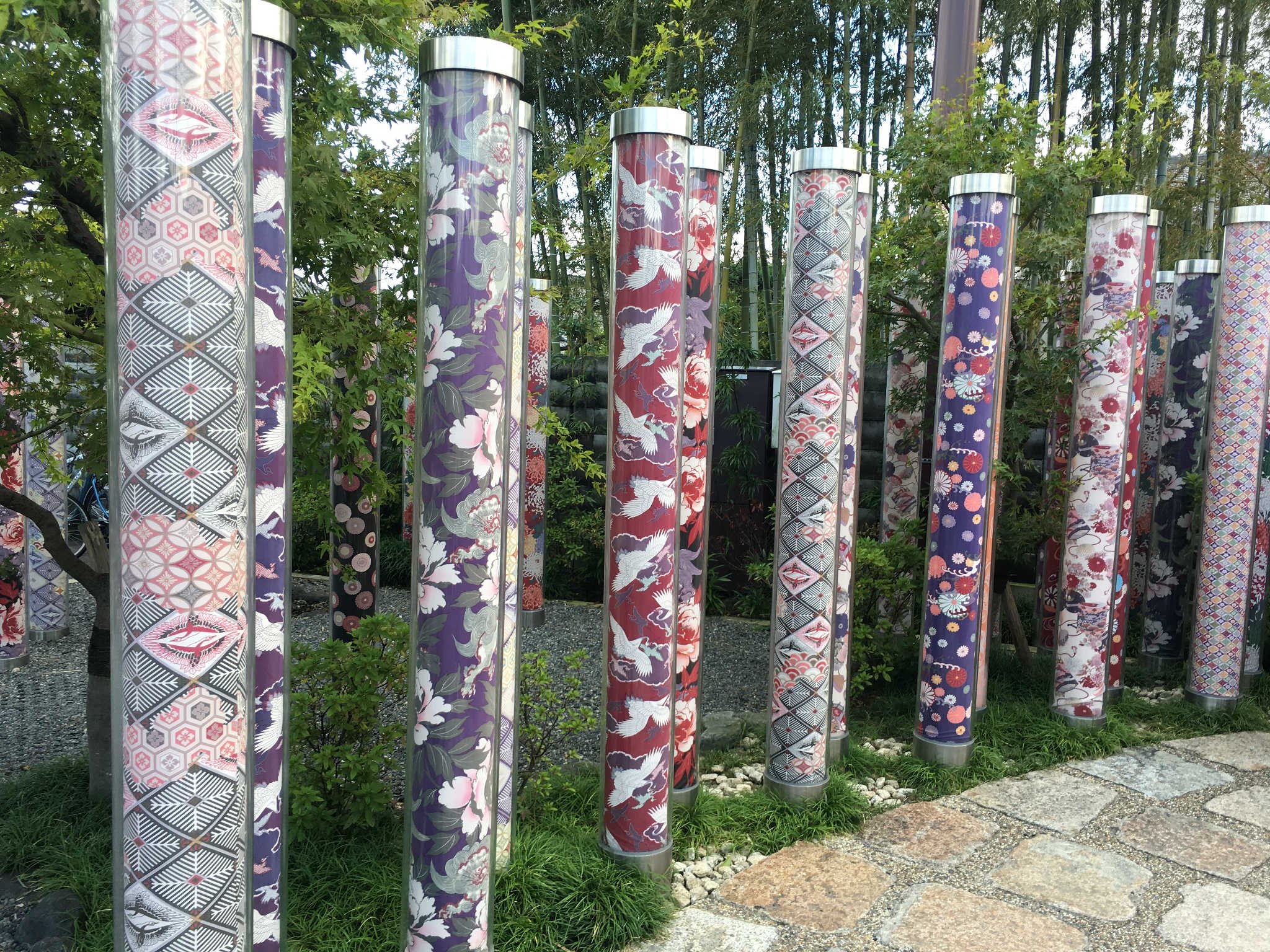This is an authorized translation in English of a post in French by @japon: Daikaku-ji, le grand complexe bouddhiste de Arashiyama
As my primary language is not English, there are probably some mistakes in my translation.
Remember that the person that speaks here is NOT me, Vincent Celier (@vcelier), but @japon, a French guy.
The visit of the small moss garden Gio-ji allows to have a reduction for the entrance of a big temple: the Daikaku-ji. A twin ticket even though both places are a good half hour walk away. It does not matter, I like to walk.

By following my GPS, I pass through residential areas, small muddy paths next to rice fields, and finally arrive at Daikaku-ji. The place is not uninteresting, but it is not so different from other temples that I could see.
Am I becoming blasé?
Not really, but at first there is nothing that jumps to my eyes, which appeals to me. There are those long wooden corridors that connect the buildings to each other, these Zen gardens with their immaculate white gravel.



Between the buildings, different atmospheres. Sometimes a moss garden, sometimes a dry garden, all immersed in the heart of nature. It's still very beautiful.



And then comes this little moment that will give all the importance to this visit. Many Buddhist monks go from building to building singing and praying.
A little magic moment. With the few other visitors beside me, we are transported by the songs of those monks draped in their saffron robes and by the smell of incense.

At the end of the complex is a large pond, with a beautiful view of the surrounding nature. It is time for me to walk a few miles to get back.

Back to Arashiyama station, and nearby I stop in front of another forest. If the bamboo was a unique moment, here are the kimonos!
"Kimono Forest" is a collection of cylindrical pillars that were installed as part of the renovation of the station in 2013. The pillars are grouped together as a forest and a piece of textile evoking the kimono is displayed on each of the pillars.
Each of the pillars is 2 meters high and there are about 600 of them, all installed on all the grounds of the station!


This is the end of my visit to Kyoto and its many treasures. In my first article on this city, I told you of my disappointment by noticing, at first glance, only urbanization, traffic and noise.
Day after day, I discovered the true face of Kyoto by walking about 15 kilometers each day. If I retain the images of these wonderful temples and gardens, they would be nothing without the inimitable atmosphere of the city, which plays the role of binding. Kyoto would be nothing without its gardens, but these gardens would be nothing without Kyoto.
-- @japon
01: Travel diary in Japan, by @japon
02: Tokyo, overcrowded city? Really? by @japon
03: Are the Japanese too disciplined? by @japon
04: Going to Japan without speaking Japanese? by @japon
05: Ueno, more than just a big park in Tokyo, by @japon
06: Asakusa, diving in the heart of Tokyo's historic district, by @japon
07: Ameyoko, Ueno's colorful market, by @japon
08: Tsukiji, the largest fish market in the world, by @japon
09: Climb the steps of Atago Jinja Shrine in Tokyo, by @japon
10: Hama Rikyu, an exceptional park in the heart of Tokyo, by @japon
11: Jimbocho, old books and tempura, by @japon
12: Shinjuku Gyoen Park and the best burger in the world!, by @japon
13: One night in Shibuya, by @japon
14: Takeshita dori : this little street dedicated to fashion (and good crepes), by @japon
15: They lie to you about Kyoto, by @japon
16: The temples and secret garden of Higashi in Kyoto, by @japon
17: Kinkaku-ji, the temple of the Golden Pavilion in Kyoto, by @japon
18: Ryoan-ji, the amazing stone garden in Kyoto, by @japon
19: The Ninna-ji Temple and its extraordinary gardens, by @japon
20: Kyoto Gyoen, the Imperial Palace Park, by @japon
21: Nishiki Market: A Must in Kyoto, by @japon
22: Ginkaku-ji, the temple of the silver pavilion in Kyoto, by @japon
23: Meditate on the path of philosophy, by @japon
24: Nanzen-ji, its impressive gate and two gardens, by @japon
25: Heian-jinju: the big shrine and its garden that I almost missed, by @japon
26: Eikan-do, the temple of the momiji maples in Kyoto, by @japon
27: Kodai-ji, a Kyoto temple dedicated to a woman's love for her husband, by @japon
28: Sannenzaka and Ninenzaka, the streets of Higashiyama, by @japon
29: Kiyomizu-dera, the temple of pure water in Kyoto, by @japon
30: Tofuku-ji: the maple lookout point, by @japon
31: Makis, Yasaka-jinja Shrine and Maruyama Park, by @japon
32: Nijo Castle and its fabulous garden, by @japon
33:Departure for Osaka and its castle, and announcement of a typhoon, by @japon
34: Osaka, the garden Keitaku-en under a torrential rain, by @japon
35: Doguya-suji, the kitchen market in Osaka, by @japon
36: Dōtonbori, the bustling district of Osaka, by @japon
37: Back to Kyoto and Typhoons, meetings and reunions, by @japon
38: Sanjūsangen-dō, the temple of a thousand and one statues, by @japon
39: On the road to Fushimi Inari Taisha, by @japon
40: Daigo-ji, the large Buddhist complex built on a mountainside, by @japon
41: Departure for Nara, we look at the fallow deers and we mistake the garden, by @japon
42: Isui-en, the big Japanese garden of Nara, by @japon
43: Todai-ji, the temple with the huge Buddha statue in Nara, by @japon
44: Nara, from Nigatsu-dō to Kasuga, by @japon
45: Arashiyama, the district west of Kyoto and its bamboo plantation, by @japon
46: Tasting the serenity of Jojakko-ji Temple, by @japon
47: Tenryū-ji, one of the most beautiful temples of Arashiyama, by @japon
48: I finally find the Gio-ji, this little Arashiyama moss garden, by @japon
